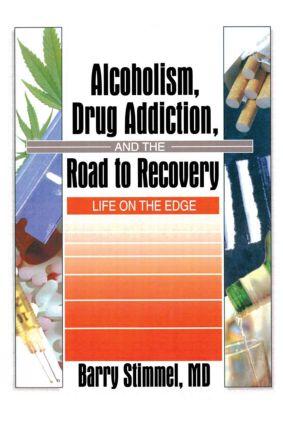
Zustellung: Fr, 01.08. - Do, 07.08.
Versand in 3-4 Wochen
VersandkostenfreiThis remarkable book enables those with little or no background in science or health care to understand the complex issues surrounding drug use. In jargon-free language, it discusses the differences in the psychological and physical effects of various drugs and how particular substances affect certain people in different ways. Alcoholism, Drug Addiction, and the Road to Recovery: Life on the Edge provides current, reliable, and unbiased information on methods for dealing with dependency upon alcohol and central nervous system depressants, hallucinogens, heroin, nicotine, marijuana, caffeine, amphetamines, designer drugs such as Ecstasy, and steroids. Originally published in 1992 as The Facts About Drug Use, this updated edition contains new information about the effects of alcohol and recreational, mood-altering drugs on the body, the reasons individuals give for initiating drug use, and the treatment options available to those who become dependent on drug use as a way of life.
To view an excerpt online, find the book in our QuickSearch catalog at www. HaworthPress. com.
To view an excerpt online, find the book in our QuickSearch catalog at www. HaworthPress. com.
Inhaltsverzeichnis
Preface Acknowledgments PART I. BASIC CONCEPTS Chapter 1. Who Uses Drugs? Drugs and the Young Adults and Drug Use, Ethnicity and Drug Use, Drugs and the Work Place, Drug Use Among the Affluent , Summary Chapter 2. Classifying Mood-Altering Drugs Types of Classification Differences and Similarities Among Drug Groups Designer Drugs Club Drugs Performance-Enhancinhg Drugs Summary Chapter 3. Habituation, Dependency, and Addiction Defining Terms Effects of Drugs on the Brain Chapter 4. Why People Use Drugs Initiating Drug Use Biological Determinants Psychological Factors Environment and Conditioning Conclusion Chapter 5. Identifying Inappropriate Drug Use and Drug Dependency Signs and Symptoms of Drug Use Addressing Drug Abuse in Your Children Laboratory Aids to Identify Alcohol and Drug Use Value of Identifying the Drug User Chapter 6. Treating Drug Dependency Available Treatment Modalities Evaluation of Treatment After Treatment The Law and Drug Treatment PART II. MOOD-ALTERING DRUGS Chapter 7. Alcohol Patterns of Use Costs of Drinking Common Alcoholic Beverages How Alcohol Is Handled by the Body Effects of Environment Interaction with Other Drugs Dependency and Withdrawal Adverse Effects Diagnosis Reasons for Excessive Drinking Alcoholism: A Disease or a Psychological Disorder? Summary Chapter 8. Central Nervous System Depressants and Antianxiety Agents Patterns of Use Barbiturates Nonbarbiturate Hypnotics and Sedatives Other Central Nervous System Depressants Benzodiazepines Miscellaneous Antianxiety Agents Chapter 9. Powerful Hallucinogens, Phencyclidine, and Ecstasy Classification Adverse Effects of Hallucinogens Ecstasy Phencyclidine Ketamine Chapter 10. Marijuana Reefer Madness Patterns of Use Tolerance, Dependency, and Withdrawal Adverse Effects Moving to Stronger Drugs Medical Uses of Marijuana Conclusion Chapter 11. Opiates and Opioids Opium Preparations Action of Opioids on the Brain Effects of Opioids on the Body Tolerance, Dependency, and Withdrawal Opioids Susceptible to Nonmedical Use Opiate Agonists? Antagonists Partial Opioid Receptor Agonists Chapter 12. Heroin Addiction Heroin from Opium: The Street Trade Getting High and Coming Down Prevalence Adverse Effects The Challenge of Treating Heroin Addiction Measuring Treatment Effectiveness Chapter 13. Amphetamines, Amphetamine-Like Drugs, and Caffeine Amphetamines Amphetamine-Like Drugs Caffeine Chapter 14. Cocaine Patterns of Use Cocaine Metabolism Dependency, Tolerance, and Addiction Adverse Effects of Cocaine Treatment of Cocaine Dependency Chapter 15. Nicotine Cigarette Smokers Today Available Nicotine Products Ingredients in Tobacco Dependency, Tolerance, Addiction, and Withdrawal Adverse Effects of Smoking Treatment Chapter 16. Volatile Solvents, Anesthetics, and Organic Nitrites Volatile Solvents Anesthetic Agents Organic Nitrites PART III. AREAS OF SPECIAL CONCERN Chapter 17. Multiple Drug Use Alcohol and Other Drugs Smoking and Drug Use Opioids Cocaine Marijuana Treatment Chapter 18. AIDS and Drug Use HIV: The Human Immunodeficiency Virus Preventing HIV Transmission Treatment of AIDS Relationship Between the Use of Non-Injecting Mood-Altering Drugs and HIV Infection Summary Chapter 19. Drugs, Pregnancy, and the Newborn Incidence of Drug Use During Pregnancy General Effects of Drugs on Pregnancy Outcome Human Immunodeficiency Virus <
Produktdetails
Erscheinungsdatum
20. März 2002
Sprache
englisch
Seitenanzahl
436
Autor/Autorin
Barry Stimmel
Verlag/Hersteller
Produktart
kartoniert
Gewicht
621 g
Größe (L/B/H)
211/152/29 mm
ISBN
9780789005533
Entdecken Sie mehr
Bewertungen
0 Bewertungen
Es wurden noch keine Bewertungen abgegeben. Schreiben Sie die erste Bewertung zu "Alcoholism, Drug Addiction, and the Road to Recovery" und helfen Sie damit anderen bei der Kaufentscheidung.







